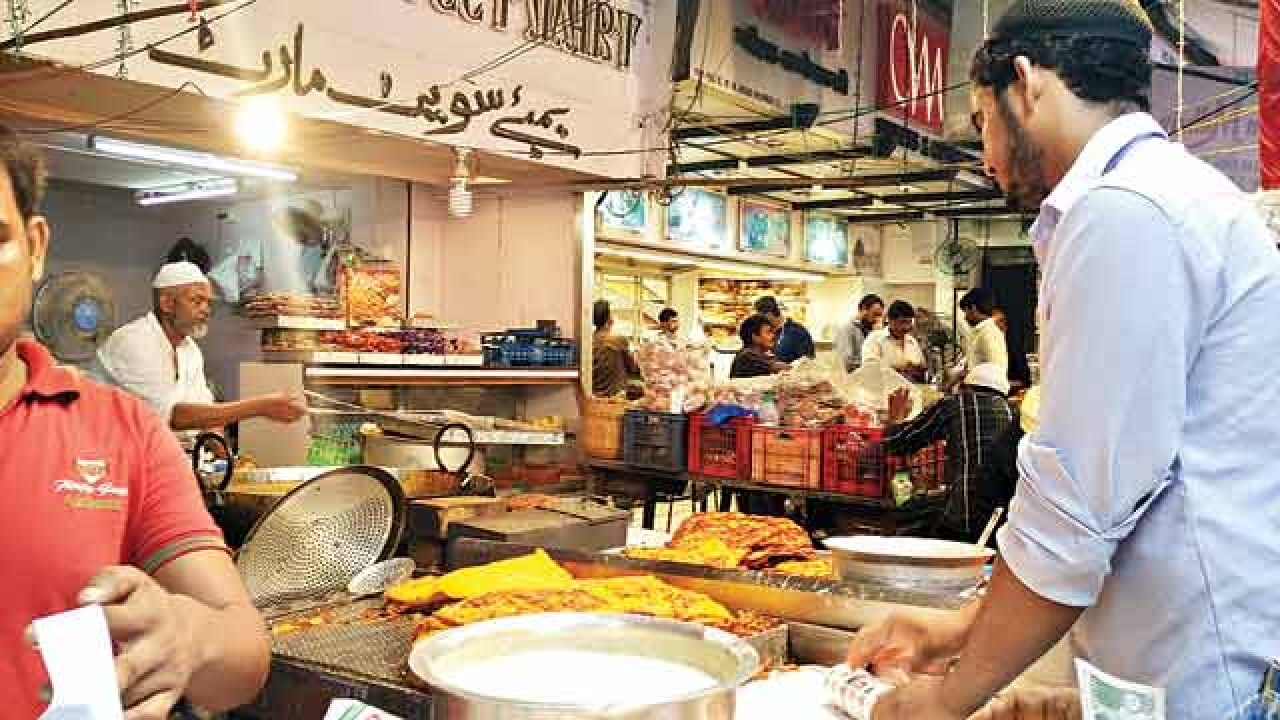
Last evening I went for an iftar trail through Mohammad Ali Road, a tradition ingrained in me from my origins in Lucknow. Ramzan is the time when the real food and foodies come out in the evenings for a true feast of all senses. A time when there is colour, aroma, flavour and love in the air.
There’s a plethora of dishes that are only Ramzan specific. Every shop owner will bring out a signature dish that you get only in the holy month, which is usually a dessert. Sandal is such a dessert which shows up only during this time, it’s a steamed fermented rice cake (very close to the Goan sanna in flavour, although lighter in texture),which is topped with malai and nuts, if overtly sweet is not your thing, this is just the right dessert for you. Malai Khaja is another such dish which although available all year round gains importance in the holy month. The sweet to really look out for and acknowledge though, is the Malpua.
The beaten egg condensed milk flour emulsion gets all the attention as it is being dropped into flat kadhais with ghee to form big, full moon like pancakes that are topped up with rabri or eaten with Phirni. Most shops go through anywhere between 2,000 to 5,000 eggs in one night. The double egg version is more fluffy and crispy for obvious reasons. While I was sampling the Malpua it struck me as an amazing story of taste crossing borders and religions. It is a sweet that stands for festivities and celebrations across the country and beyond. I have grown up eating Malpuas in winter spiced with fennel and black pepper. It has been the food of the gods, having been a part of the Chhappan Bhog at Puri during the evening prayers for centuries.
Bengali, Maithili and Oriya malpua is traditionally made only with thickened milk and a little flour (sometimes rice flour instead of wheat flour). In Uttar Pradesh and Chhattisgarh there are several variations, using some or all of the following ingredients: maida (refined flour), semolina, milk, and yogurt. The batter is left to stand for a few hours before being spooned into a tawa or a kadhai of hot oil to form a bubbling pancake, which should be crisp around the edges. The pancakes are then immersed in a thick sugar syrup and are a must-have on Holi. Malpua also known as Marpa in Nepal is specially made in the Kathmandu Valley, which uses maida, mashed up ripe bananas, fennel seeds, pepper corns, milk and sugar into a batter and prepared in a similar way as in India.
So if you haven’t already been to Mohammad Ali Road, do go and dig in to get a first hand experience of food beyond borders.